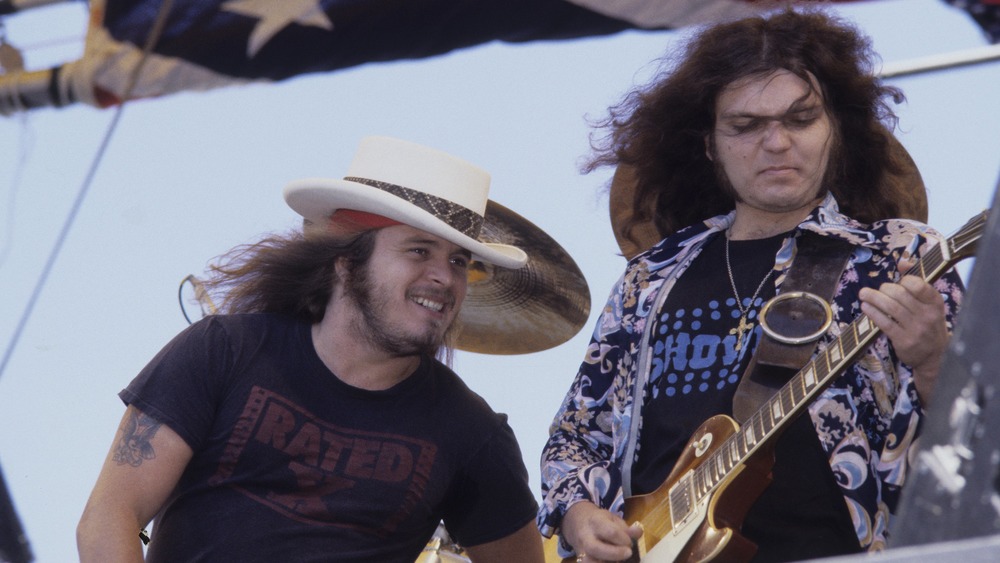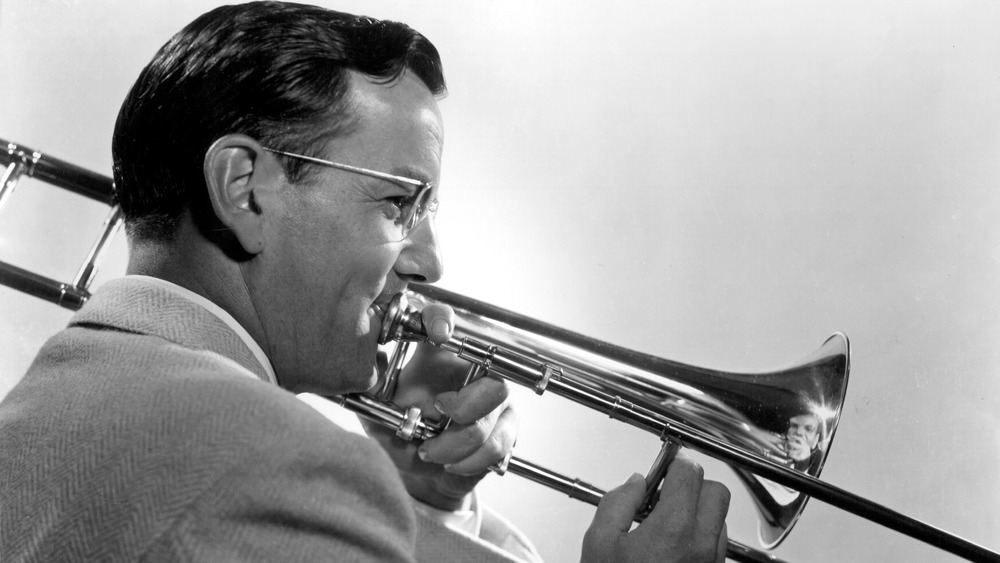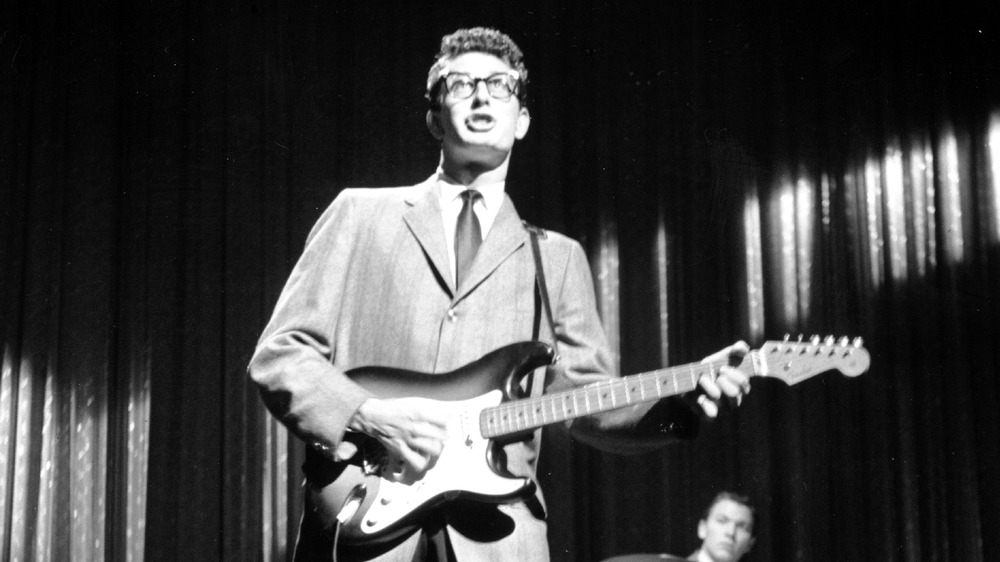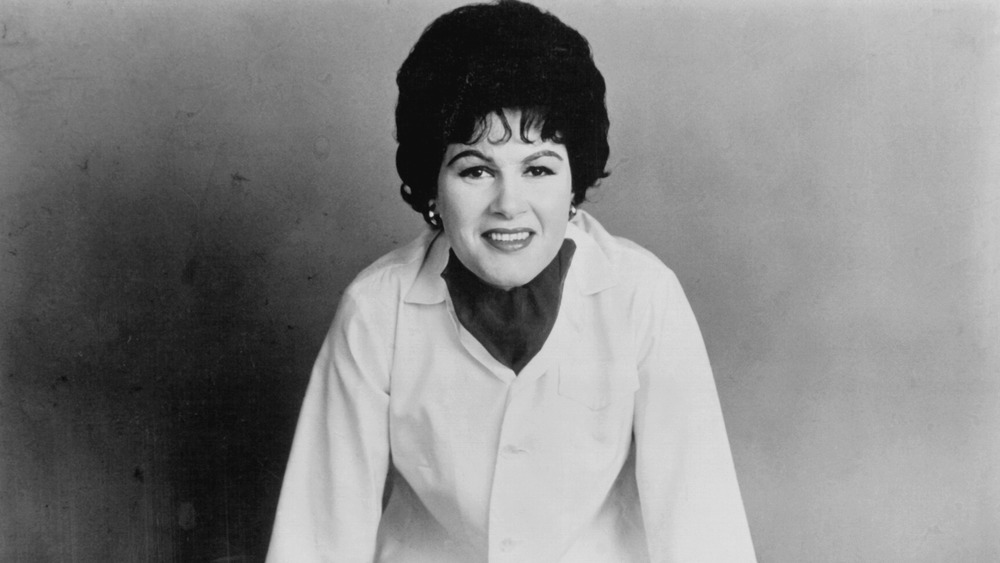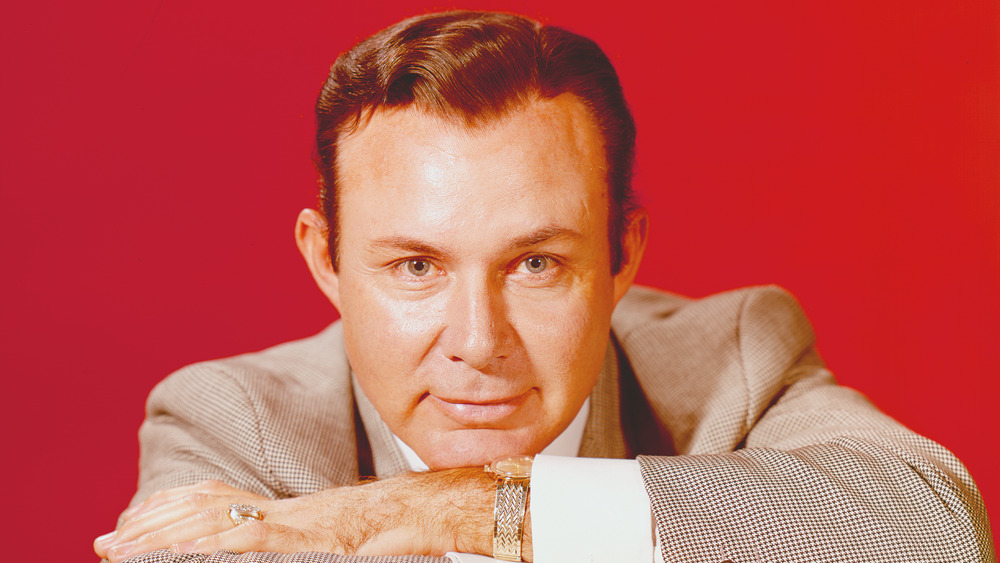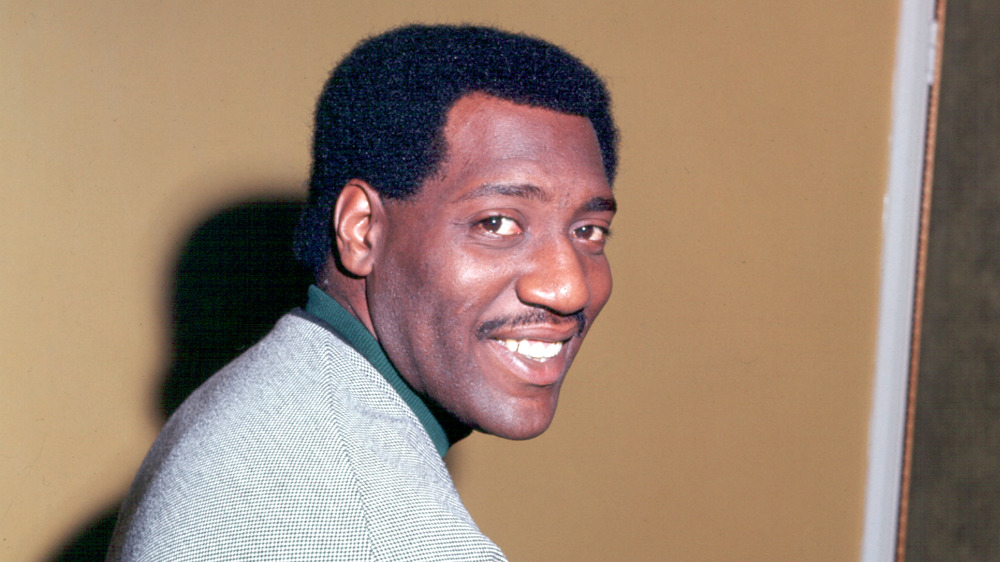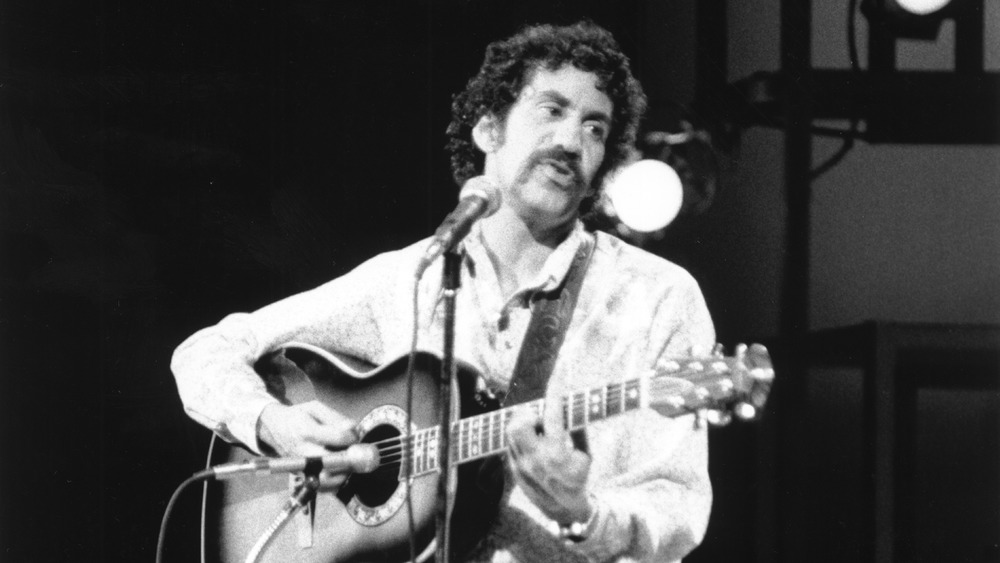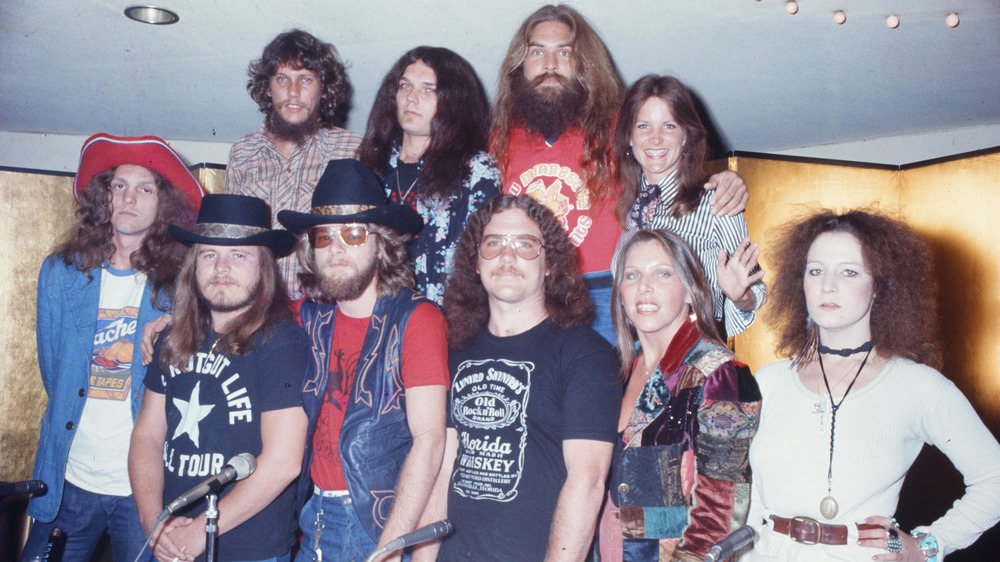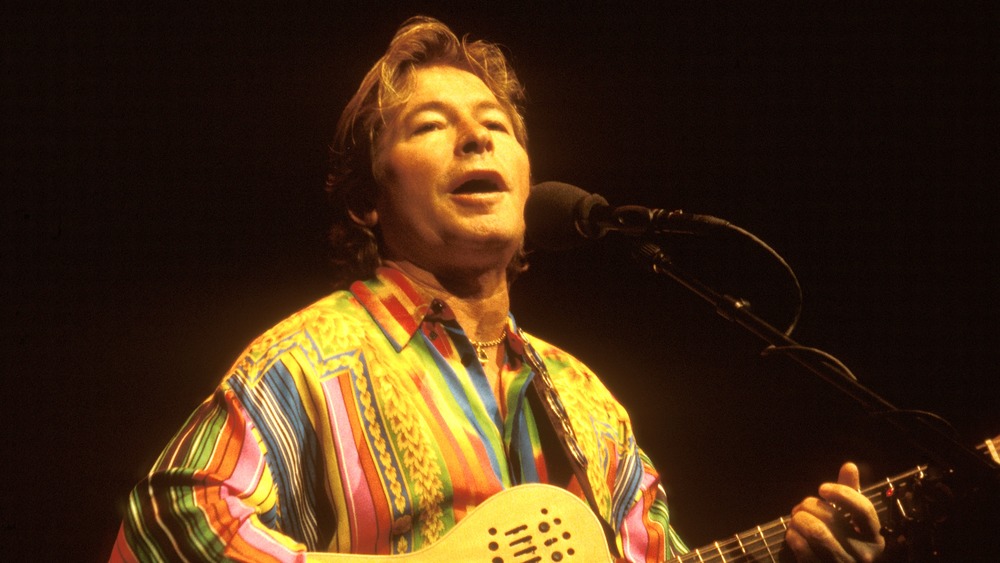Musicians Who Were Tragically Killed In Plane Crashes
In many ways, celebrities and musicians have stepped into the roles once reserved for the heroes of legend. For decades, fans have thought of their favorite stars in the language of mythology and religion. A great guitarist is no mere virtuoso. They're a guitar god. Countless song writers have reminded us that music can save our mortal souls, that blues is the healer, that funk is going to take us higher, and, of course, rock 'n' roll will never die.
Although music is forever, tragedy repeatedly reminds us that the people behind the songs are all too mortal. From disease and drug abuse to suicide, murder, and accidents, stars meet their fates like all of us. Nevertheless, the untimely passing of a young, talented musician never fails to inspire sadness and shock.
Air travel has been particularly unkind to the world of music. Despite being a proven and comparatively safe mode of transportation, a cursory examination of the number of famous musicians killed in plane crashes would seem to indicate that flying presents a special risk to the profession. However, that presumption likely has more to do with fame and press coverage than statistics.
Still, a star's death in a crash presents an irresistible, imagination-catching metaphor. What could be more poignant than an artist's figurative climb to the stars ended by a literal fall to Earth? These are the stories of some of music's greatest talents and the heartbreaking plane crashes that ended their lives.
Glenn Miller's plane disappeared over the English Channel
During the darkest days of World War II, Americans could rely on the music of Glenn Miller and his orchestra to lift their spirits. Rising to fame as the king of swing in the late 1930s, Miller topped the charts with such classics as "In the Mood" and "Pennsylvania 6-5000," according to Biography. By the early 1940s, the Glenn Miller Orchestra was the number one dance band in the United States.
As WWII raged, Miller began to lose band members to the draft. According to George T. Simon, a former Glenn Miller Orchestra drummer and author of Glenn Miller and his Orchestra, the patriotic band leader, then in his late 30s and ineligible for the draft, joined the war effort on his own terms. Appealing directly to Brig. Gen. Charles Young, Miller entered the Army to modernize its approach to military music. As leader of the U.S. Army Air Force Band, he also found himself using music as part of a counter propaganda radio program.
On Dec. 15, 1944, Miller, then stationed in England, boarded a single engine UC-64. En route to Paris, which had been liberated by Allied forces in August, Miller was scheduled to make arrangements for moving his band to the French capital. Miller's plane never arrived. Although wreckage and bodies have never been recovered (sparking a number of conspiracy theories ranging from secret missions to an accident involving Allied bombers), it's likely that Miller's plane went down in icy conditions over the English Channel, as per Colorado Public Radio.
The Tennessee Nightingale's fall
Born in the foothills of the Great Smoky Mountains in 1898, Grace Moore made an unlikely journey from East Tennessee to New York's Metropolitan Opera House to become one of the most beloved musical stars of the 1930s and 40s.
Raised in a strict Baptist household, the starry-eyed singer yearned to leave her insular community for the footlights of New York. At 18, she was forced to confess to the congregation of her church to dancing at a party, an activity considered immoral and sinful. Humiliated but determined, she made a plan to escape her restrictive upbringing.
Moore's pursuit of musical education eventually led her to France where she studied opera. In 1928, she made her debut at the Metropolitan Opera House. Dubbed the Tennessee Nightingale by the press, Moore became a worldwide musical phenomenon. Soon, the glamorous singer became a star of the silver screen.
As recounted by Susan Sawyer, author of More than Petticoats, while on a sold-out, 1947 tour of Europe, Moore boarded a twin-engine plane in Copenhagen, Denmark, bound for Stockholm, Sweden. The only American on board, Moore, 48, found herself in the company of Prince Gustav Adolph, heir to Sweden's throne. The plane had barely lifted from the ground when it shuddered and nosedived into the ground killing all 22 of the plane's occupants. An investigation revealed that a clamp holding the plane in position on the runway had not been removed prior to take off resulting in the crash.
The Day the Music Died
February 3, 1959, is arguably the single most tragic day in rock 'n' roll history. Memorialized as the day the music died, that snowy, winter morning marks the date when superstar musician Buddy Holly, 17 year-old up and comer Ritchie Valens, and J.P. "The Big Bopper" Richardson were killed when the small plane they were traveling in crashed in icy weather shortly after takeoff.
Frustrated with a mechanically unsound and freezing bus, Holly chartered a plane to take him and band members Tommy Allsup and Waylon Jennings from their Winter Dance Party show at Clear Lake, Iowa's, Surf Ballroom to the tour's next date in Moorehead, Minn.
Valens, nursing a cold, won Allsup's seat in a friendly coin toss. Jennings wound up giving his seat to Richardson. The Big Bopper was sick with the flu and couldn't handle another ride on the frigid bus. When Holly found out that Jennings had given up his seat, he jibed, "I hope your old bus freezes up again." Prophetically, Jennings quipped, "Well, I hope your ol' plane crashes." Although the statement was made in jest, Jennings regretted his words for the rest of his life.
The three musicians were ejected from the plane when it crashed in a barren cornfield just outside of Mason City, Iowa. A Civil Aeronautics Board investigation determined that the plane's pilot, Roger Petersen, was not qualified to fly by instrumentation in inclement weather and likely misread the plane's attitude gyroscope causing the crash.
Patsy Cline lost her life in a deadly crash
Few names in country music history are as iconic as Patsy Cline. Remembered for such powerful and haunting hits as "Crazy," "Walking After Midnight," and "I Fall to Pieces," Cline was one of the first country stars to cross over to a pop music audience.
In 1961, just as her career was going into overdrive, she was injured in a near-fatal car accident. As recounted in Finding Her Voice: Women in Country Music, 1800-2000, Cline came back, scarred but stronger. Yet, her boisterous personality was tinged with a troubling fatalism. Cline ominously gave her scrapbook to her friend, up-and-coming country singer Dottie West. ". . . It ain't gonna do me no good," she told West. "I'll never live to see thirty."
On March 5, 1963, at approximately 6:07 p.m., writes author Rich Everitt, Cline and fellow country music stars Hawkshaw Hawkins and Cowboy Copas boarded a single engine Piper Comanche piloted by Cline's manager Randy Hughes. Departing from a brief stop at Dyersburg Municipal Airport in Dyersburg, Tenn., after flying from a benefit performance in Kansas City, Hughes was anxious to get Cline, Copas, and Hawkins back to Nashville despite warnings about the weather. Minutes after take-off, Hughes, an inexperienced pilot without instrument training, inadvertently put the plane into a deadly spiral over a forested area near Camden, Tenn. All on board were killed instantly.
A storm brought down Jim Reeves' plane
Just over a year after Patsy Cline's death, country music lost yet another voice in a tragic plane crash.
According to AllMusic, Texas-born Jim Reeves was a pioneer of the sophisticated "Nashville sound," which moved country music away from its rustic roots to a more polished, cosmopolitan sound. He began his career in the 1950s with such hits as "Mexican Joe" and "Bimbo." However, by the close of the decade, he had successfully reinvented himself as a smooth, country balladeer. Like Cline, Reeves also found success in popular music. His hit singles "Four Walls," "He'll Have to Go," and "Welcome to My World" crossed genre lines thanks to Reeves' stirring, intimate delivery.
On July 31, 1964, Reeves, at the controls of his single-engine Beechcraft Model B-33 Debonair, was returning from Arkansas with his manager and piano player Dean Manuel. Departing in clear weather, Reeves and Manuel expected a smooth flight back to Nashville. According to Rich Everitt, author of Falling Stars: Air Crashes that Filled Rock and Roll Heaven, the country crooner reported he was flying into heavy rain as he made his approach to the airport. At 4:48 p.m., Reeves' plane disappeared from radar.
For two days, a search team of 400 people, 12 planes, and two helicopters combed the area near Nashville's Berry Airport. On Aug. 2, 1964, the twisted wreckage and the bodies of Reeves and Manuel were found in the thick woods northeast of the Nashville suburb of Brentwood.
Otis Redding and the Bar Kays crash in Wisconsin
One of the most influential singers of the 1960s, Otis Redding crossed racial barriers to find success in both soul and pop music. Beloved for his powerful voice, Redding's music dripped with emotion. Influenced by Sam Cooke and Little Richard, Georgia native Redding began singing in church as a child, but his love of gospel music soon gave way to an obsession with blues and rock 'n' roll.
By the mid-1960s, Redding had released two strong-selling albums of high-energy soul music. His third, Otis Blue, was a magnum opus recorded in a single 24-hour session. Composed largely of soulful cover songs, the album also featured "Respect," which would become Aretha Franklin's signature song when she re-recorded it in 1967, as per Biography.
Already a superstar of soul and R&B, Redding wanted to widen his appeal. His 1967 performance at the Monterey Pop Festival was a career-defining moment. At last bringing his talents before an enthusiastic, white audience, Redding was poised to become a musical icon.
However, just before Redding released the song that would become his biggest hit, the singer and four members of the R&B group The Bar-Kays died when their plane crashed into Wisconsin's Lake Monona on Dec. 10, 1967. No satisfactory explanation for the accident has ever been determined. Redding was 26. A first for Redding, "(Sittin' On) The Dock of the Bay," released a month after the crash, went to number one on the Billboard Hot 100.
Jim Croce's tragic plane crash
Acoustic guitar in hand and clad in faded denim and work boots, Jim Croce set the standard for 1970s singer-songwriters "Time in a Bottle" and "Operator." Possessing a unique gift for combining storytelling with melody, Croce created unforgettable characters that reflected the lives, the loves, and the anguish of common people.
Croce, however, was no overnight success. Struggling to make music his livelihood, he took a succession of blue collar jobs while playing clubs for as little as $25 per night. Everything changed for Croce in 1972 with the release of his first album, You Don't Mess Around with Jim, as per Biography. A string of hit singles from the album made Croce a superstar, but life on the road put a toll on his marriage.
Fed up with the music business, Croce decided to concentrate on his family. After one more tour, he planned to leave the road for good. On Sept. 20, 1973, Croce played his final concert in Natchitoches, La. After the show, he boarded a chartered Beechcraft E18S bound for Texas, writes author Rich Everitt. On takeoff, the plane failed to gain altitude and slammed into a row of trees. There were no survivors. An investigation suggested that the pilot may have suffered a heart attack that led to the accident.
"I've Got a Name," from Croce's final album, was released the following day. Croce's death renewed interest in his early work, and "Time in a Bottle" from his first album went to number one.
A plane crash devastated Lynyrd Skynyrd at the height of their popularity
Beloved by music fans as the greatest Southern rock band of all time, Lynyrd Skynyrd was one of the biggest groups of the 1970s. Fronted by singer Ronnie Van Zant, the band remade rock music in their own image with songs that reflected their whiskey-soaked, hell-raising lifestyle. Lynyrd Skynyrd rocked as hard as any supergroup of the decade with such hit singles as "Gimme Back My Bullets" and their signature tune "Sweet Home Alabama" but also displayed a soulful side with songs such as "Simple Man" and the epic "Free Bird."
In 1977, Lynyrd Skynyrd was at their peak. Having just released their critically acclaimed album, Street Survivors, the Southern rockers were preparing for a triumphant tour that would put their tumultuous past of alcohol, drugs, and in-fighting behind them at last.
On Oct. 20, 1977, the band departed from a show in Greenville, S.C., for Baton Rouge, La., on their chartered Convair CV-240 airliner, recounts author Rich Everitt. Just short of its destination, the plane crashed in a heavily wooded swamp near Gillsburg, Miss. Final radio contact from the pilots indicated that the plane was out of fuel. Lead singer Van Zant, guitarist Steve Gaines, and back-up singer Cassie Gaines, as well as both pilots and the band's assistant road manager, were killed instantly.
Ozzy Osbourne's Randy Rhoads died in a freak crash
In 1979, notorious rock 'n' roll madman, Ozzy Osobourne was dismissed from the heavy metal powerhouse Black Sabbath, reports Loudwire. However, Osbourne would make an against-all-odds comeback that would result in solo success that would eclipse his days with the legendary band.
The cornerstone of Osbourne's second shot at the metal crown came in the form of a diminutive guitar virtuoso named Randy Rhoads. One of the hottest axemen in Los Angeles, Rhoads was the number one contender for Edward Van Halen's throne.
Rhoads, with his classically influenced licks. reinvigorated a disheartened Osbourne, propelling the singer to renewed popularity. With Rhoads at his side, Osbourne recorded back-to-back metal masterpieces Blizzard of Ozz and Diary of a Madman.
Sadly, Rhoads' time at the top of the metal heap was cut short. On March 19, 1982, writes Rich Everitt, Rhoads and band makeup artist Rachel Youngblood, enjoying a short break before a gig in Florida, went for a ride in a borrowed Beechcraft Bonanza piloted by Osbourne's bus driver, Andrew Aycock. Aycock's attempt to "buzz" the band sleeping on the bus resulted in the plane clipping the vehicle and careening out of control into the garage of a nearby mansion, as per Ultimate Classic Rock. All on board were killed. Rhoads was just 25 years-old.
Rick Nelson lost his life in a fiery crash
Rick Nelson came of age as a squeaky-clean boy-next-door alongside his real-life parents and siblings on the 1950s sitcom The Adventures of Harriet. A gifted musician, Nelson became a teen rock 'n' roll idol.
As the 60s dawned, Nelson moved away from his 50s pop past and went in a more down-home musical direction. In 1972, Nelson enjoyed renewed popularity thanks to his song "Garden Party," a reflective acoustic number recounting his disastrous appearance at a Madison Square Garden oldies revival show, as per Ricky Nelson: Idol for a Generation.
Nelson at last embraced his teen idol past and went on a nostalgia tour with rock 'n' roll icon Fats Domino in 1985. His final bid at a comeback was short lived. Nelson died when his chartered DC-3 caught fire over Texas, on New Year's Day, 1986. Nelson's fiancée and band also perished in the burning wreckage. Only the pilots, who managed to successfully land the burning aircraft, survived. As detailed by author Rich Everitt, a faulty heater was the suspected cause, but a National Transportation Safety Board investigation was unable to find the source of the fire.
John Denver died piloting his own experimental plane
John Denver was a music phenomenon in the 1970s. As a singer-songwriter, he moved effortlessly between folk, country, and soft rock. The shaggy haired, bespectacled musician charmed audiences with his smiling "aw-shucks" demeanor and gentle acoustic ballads dedicated to simplicity and harmony with nature.
As his music career slowed in the 1980s, Denver turned his attention to politics, ecology, and humanitarian issues. He was also staunchly against music censorship and memorably testified alongside Frank Zappa and Twisted Sister's Dee Snider at a Senate Labor and Commerce Committee hearing on the topic of record labeling.
Denver was also an aviation enthusiast and experienced pilot. On Oct. 12, 1997, Denver was piloting his two-seater, Rutan Long-EZ over California's Monterey Bay. Denver, 53, crashed the homebuilt, experimental plane when he was unable to execute a fuel tank switch. As reported by The Los Angeles Times, the fragile aircraft broke apart violently on impact with the water. Denver's mangled body, discovered minutes after the crash, was identified by fingerprints the following day.
Aaliyah died in a preventable crash in the Bahamas
Only 15 years-old, Aaliyah rose to stardom as a pop and hip hop sensation in the late 1990s. By the turn of the millennium, she was R&B royalty.
As reported by MTV, Aaliyah had just finished shooting a video for her upcoming single "Rock the Boat" from her self-titled third album on location in the Bahamas on Aug. 25, 2001. The singer and her entourage had chartered a twin-engine Cessna 402B for their return flight to the states. Slightly smaller than the plane they arrived in, the 402B nevertheless seemed large enough to accommodate Aaliyah's crew and luggage.
Over the protestations of the pilot and baggage handler, writes Rich Everitt, the weary passengers insisted on taking off despite the plane being overloaded by hundreds of pounds. According to eyewitnesses, the plane rose to an altitude of 60 to 100 feet before violently pitching forward and crashing 200 feet from the runway. All nine passengers died. Suffering severe head trauma and burns, Aaliyah was killed instantly. She was 22.
